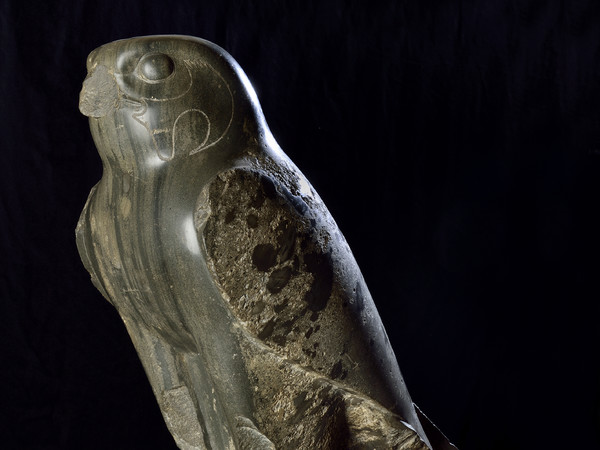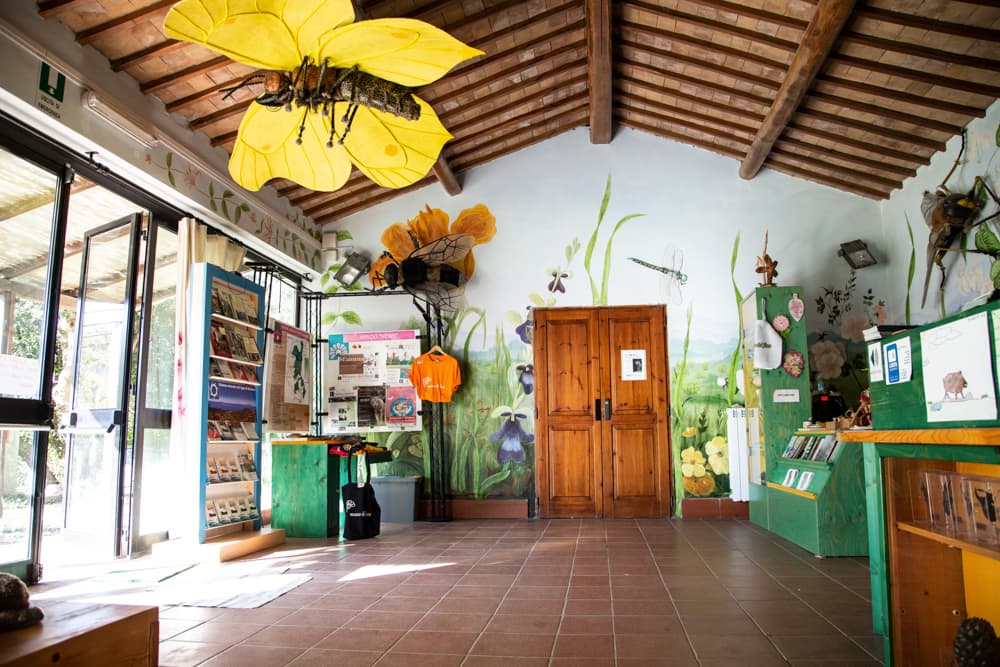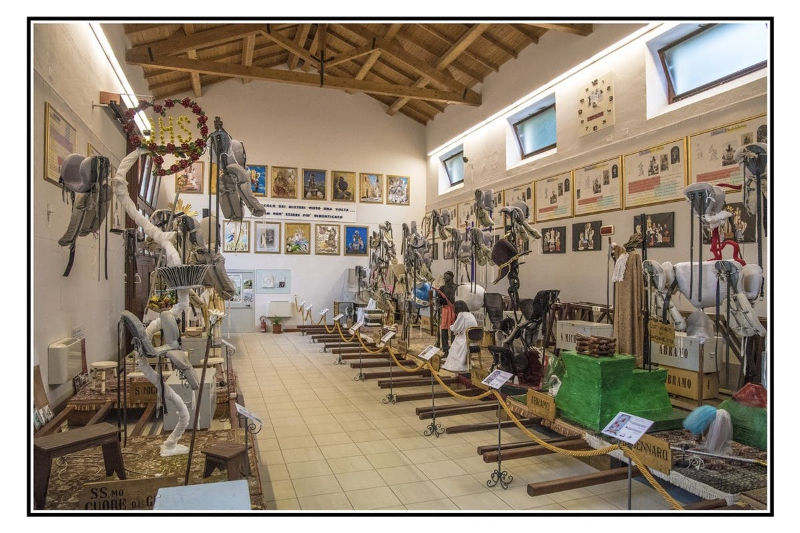The works preserved in the soil of the city,inside the Museo dal Arcos (Government Palace) were mostly found in 1903, during excavations conducted under the northern portion of the Lombard walls, near the church of St. Augustine.Preserved for the most part in the Sannio Museum, they consist of a pair of Egyptian granite obelisks with hieroglyphic inscriptions (one of which is displayed in Papinian Square, the other mutilated); in twenty-one sculptures of Egyptian material, style and provenance.There are, then, four Egyptian statues of Egyptian material and Hellenistic Egyptian coinage and, again, three fragments of marble bas-reliefs with representations in pure Egyptian style.
To conclude, the four singular marble works of Hellenistic-Roman style deserve important mention, one of which (fragment of a statuette of Isis on the throne) in a private property in the city, and three preserved in the Barracco Museum in Rome (two sphinxes of early Ptolemaic age and one sphinx of the late period). Not to forget the ‘Ox Apis’ whose attribution is, however, doubtful. But in the background of the Egyptian-Samnite link remains the cult of the goddess Isis. It developed prominently in 88 CE under the emperor Domitian. Valuable evidence of it can be found in the red granite obelisk of Syene located, as of 1872, in Papinian Square. Even earlier it was placed in Piazza Duomo (since 1597). The obelisk is about 3 m high and weighs 2.5 t. It consists of 4 segments, reassembled without major gaps: only small parts of the base and summit pyramid are missing. The four faces are covered with hieroglyphics in which the cartouche of Domitian and the name of the temple’s founder, a certain Lucilius Lupus, can be recognized. The inscriptions are translated into Latin and Greek on the base. These inscriptions, according to Schiaparelli’s translation ,sound like this. On the first face one appreciates, "Ra Oro the young man who brings down (the barbarian peoples) – Oro, victorious rich in years, the great of victory, Autocrator Caesar, king of upper and lower Egypt (of south and north) Domitianus, living forever, had the two red granite mountains (of Siena) brought from and come toward his abode of Rome who rules the two worlds" . On the second of them : "For Isis, divine mother, morning star, queen of the gods, lady of the heavens, in the temple (?) which he erected to her (made to bring and come) this monument (this obelisk), among the gods – of his city – of Beneventus (Benevento), he ordered to bring (the obelisk) the ruler of the two worlds Domitianus – living in eternity; the appointed Lucillius Ruphus made to raise the obelisk with joy." On the third: "In the eighth year, under the majesty of Gold, Taurus, king of ‘upper and lower Egypt (of north and south) the star beloved of all the gods, son of the sun, lord of the diadems of the two regions – Domitianus living forever, built a worthy edifice to Isis, the great lady of Beneventus (Benevento) and to the gods of her heaven Lucilius Ruphinus. He ordered to bring the lord of the two worlds." And finally, on the ‘last of these: "To Isis the great divine mother, eye of the sun, this monument among the gods of her city of Beneventus (Benevento), lady of heaven, ruler of the gods all, daughter of the sun. Ordered to bear it the lord of diadems Domitianus living forever, the appointed Lucilius Rup(h)ius pose. Bonum felix faustumque sit." Walking, then, through the halls of the church of St. Sophia, one comes across the Hall of Isis, or the section devoted to Egyptian antiquities. In the hall is preserved the sacred furniture that belonged to the temple of the goddess. The temple of the goddess, indeed. The ‘ancient location of it remains mysterious. Since most of the artifacts have come to light in the Cathedral area, however, it could be assumed that that was the most certain site. But there were probably at least three other temples in the city: an ancient shrine, one of Osiris and later buildings. But Isis is much more: she can be considered, even, the ancestor of "witches." Not surprisingly, she was also called the "Rich of Mysteries." The statue of the Ox Apis (which stands at the beginning of San Lorenzo Avenue, on the right side.), dedicated to her, bears on its side the scythe of the moon at whose glow, according to legend, the witches of Benevento flew.Queen of magic and the occult, then, revealing herself in all her mystery, but also a loving mother and a woman of infinite piety. To continue in the Isiac wake, recall a fortunate find dating back to 1903, which brought to light an altar dedicated precisely to her. Carved at the top was a twisted serpent (a golden viper), the same animal that the Lombards worshipped when they arrived in Benevento. But that’s not all:About two kilometers from the inhabited center of Sant’Agata dei Goti stands the hillock known as ‘Ariella’ , which has always been a source of curiosity because of its distinctly pyramid-like features that decontextualize it from the ‘surrounding environment propped up, instead, by soft, rounded shapes. ‘Zooming’ with the Google Earth application at an elevation of 1,200 meters, one obtains an image that sharply highlights the different faces of the ‘pyramid,’ enhanced by the different refraction of light on the various sides.For some, the formation would present such appearances only by prodigy of nature. Others, however, even call extraterrestrials and spacecraft into question. But there are also those who believe that under a superficial layer of earth and debris there is actually something that is the result of ‘human work. Formations very similar to those of Sant’ Agata dei Goti are found in Visoko, Bosnia and Herzegovina. Having said that, if we really want, again on a theoretical basis, to continue hypothesizing that the ‘Ariella’ hillock is actually the work of humans, it is likely that its temporal placement is much earlier than the Roman civilization itself, which is ‘suspected’ by some to be the ‘author’ of it. The reason is simple: Saticula, already then an important crossroads of Roman trade, was well described by the sources: the construction by the Romans of an Egyptian-style pyramid would have found great resonance in the pens of the time. But that does not mean that it was not known to the Romans. This might explain the choices of Domitian, emperor from 81 to 96 A.D. who, a follower of the cult of Isis, had a temple built in her honor, which has now disappeared. The interesting point is that he had it erected in Benevento. Why, he who was a native of Rome and developed his political career there, did he concentrate the cult precisely in Benevento?Had he seen, perhaps,the ‘pyramid’ of Sant’ Agata dei Goti?













